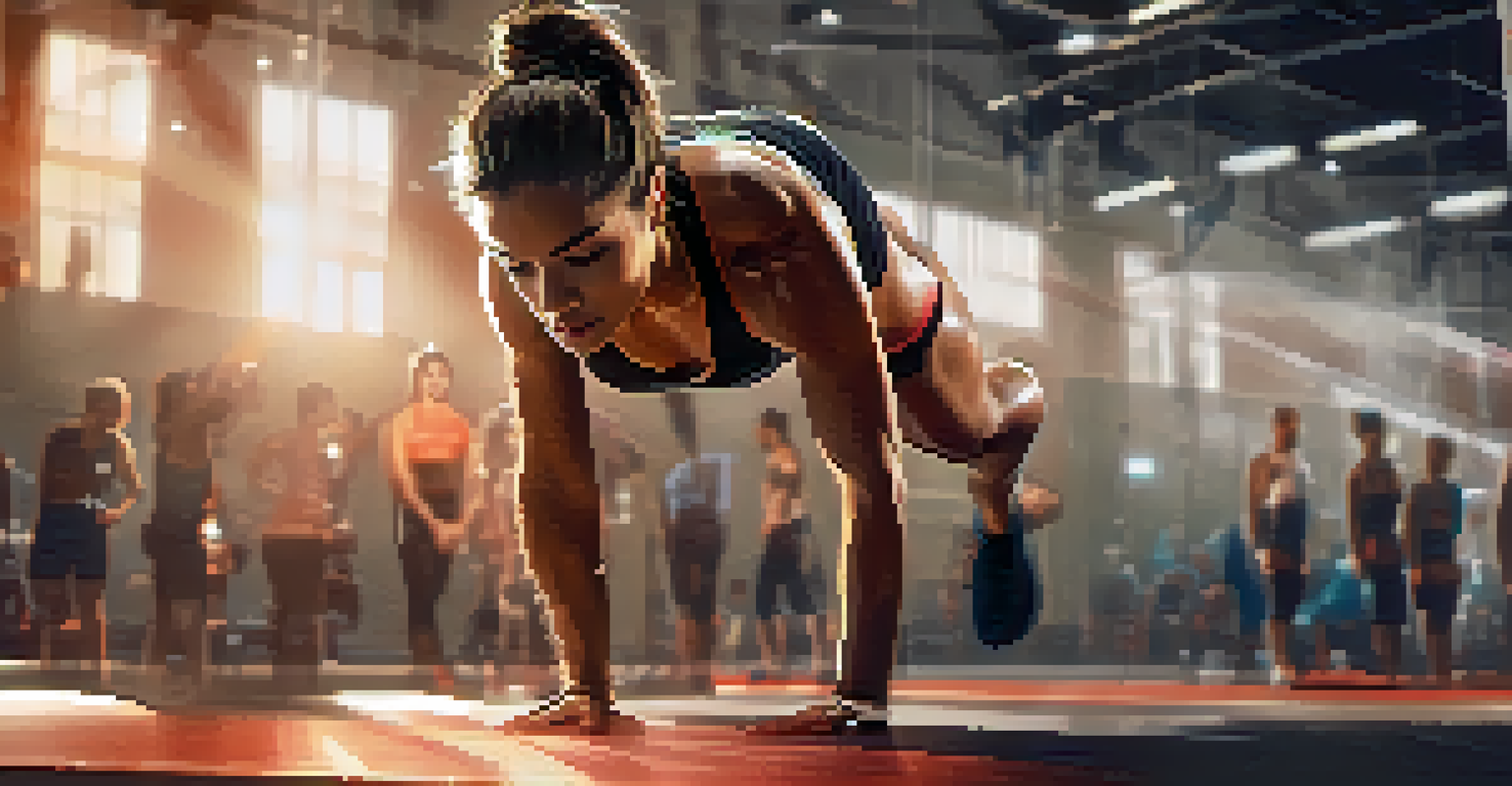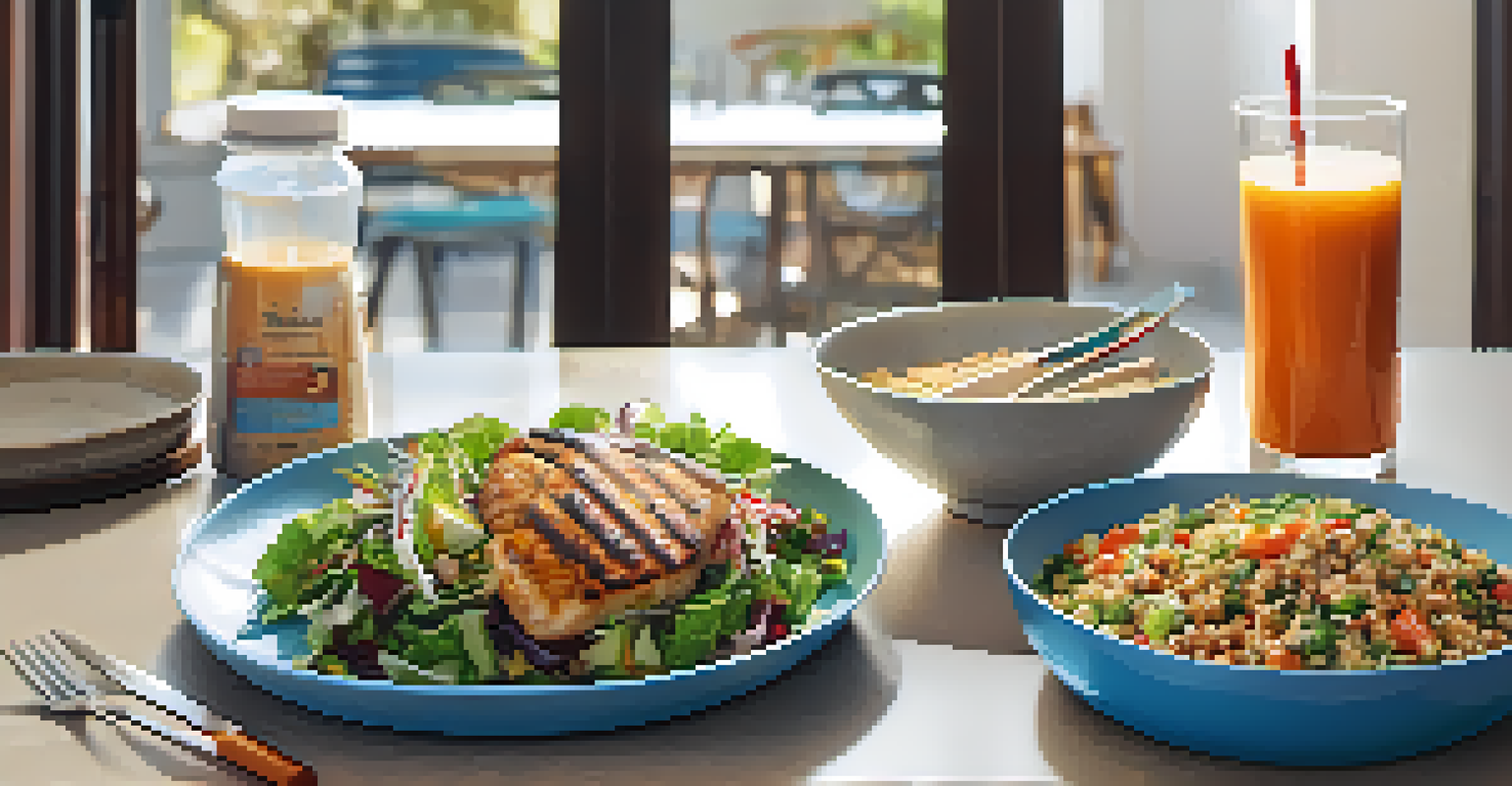A Guide to Bodybuilding Cardio: When and How to Incorporate

Understanding the Role of Cardio in Bodybuilding
Cardio is often viewed as the enemy in the bodybuilding world, but it plays a crucial role in overall fitness. It helps improve cardiovascular health, boosts endurance, and can aid in fat loss, making it a valuable tool for bodybuilders. By incorporating cardio, you can enhance your recovery and maintain a healthy weight while building muscle.
The body achieves what the mind believes.
Think of cardio as the oil in a well-tuned machine—without it, things can get sluggish. A heart that functions well can deliver oxygen more efficiently to your muscles, allowing for better performance during weight training. This means you can lift heavier and for longer periods, ultimately leading to greater muscle gains.
Moreover, balancing cardio with strength training can help you avoid plateaus. By adjusting your cardio routine, you can keep your body guessing, which is essential for continuous progress. Ignoring cardio might seem tempting, but it can hinder your bodybuilding goals in the long run.
Types of Cardio for Bodybuilders
When it comes to cardio, there are two main types: steady-state and high-intensity interval training (HIIT). Steady-state cardio involves maintaining a consistent pace, like jogging or cycling at a moderate intensity for an extended period. This type is excellent for building endurance and burning fat without overly taxing your muscles.

On the other hand, HIIT involves short bursts of intense activity followed by rest or low-intensity periods. This can be a great way to burn fat quickly while preserving muscle mass. Think of it like sprinting to catch a bus—quick, powerful, and efficient.
Cardio Enhances Bodybuilding Gains
Incorporating cardio into your routine improves cardiovascular health, boosts endurance, and aids in fat loss, ultimately supporting muscle growth.
Ultimately, the best type of cardio for you depends on your goals and preferences. Mixing both steady-state and HIIT can give you the benefits of endurance training while also promoting fat loss and muscle preservation. Experimenting with both will help you find the right balance for your bodybuilding regimen.
When to Incorporate Cardio into Your Routine
Timing is everything when it comes to incorporating cardio into your bodybuilding routine. Many bodybuilders prefer to perform cardio after their weight training sessions to ensure they have enough energy for lifting. This approach maximizes muscle gains while still allowing for effective fat burning.
Success isn’t always about greatness. It’s about consistency. Consistent hard work gains success. Greatness will come.
However, some may find that doing cardio first helps them feel more energized during their workouts. If you’re someone who values cardiovascular endurance as much as strength, consider scheduling your cardio sessions on separate days or at different times. The key is to listen to your body and adjust accordingly.
You can also tailor your cardio timing based on your goals. For instance, if you're preparing for a competition and need to shed some fat, incorporating cardio more frequently may be beneficial. Remember, consistency is crucial, so find a routine that you can stick to without sacrificing your lifting performance.
The Ideal Frequency for Bodybuilding Cardio
Determining how often to do cardio can be tricky, as it largely depends on your individual goals. For most bodybuilders, 2 to 4 times a week is a good starting point. This frequency allows you to reap the benefits of cardio without compromising muscle growth.
If your goal is fat loss, you might want to increase your cardio sessions to 4 to 6 times a week. However, ensure that you’re not doing too much to the point of fatigue, as this can hinder your performance in the gym. Think of it like adding salt to a dish—just the right amount enhances flavor, but too much can ruin it.
Balance Cardio and Strength Training
Mixing steady-state and HIIT cardio can help avoid plateaus and maintain muscle while promoting fat loss.
Lastly, as you progress, you can adjust your cardio frequency based on how your body responds. Keeping track of your energy levels and muscle gains will help you find the sweet spot that works for you.
How to Structure Your Cardio Sessions
Structuring your cardio sessions effectively can make a significant difference in your results. Start with a warm-up, even if it’s just a few minutes of light activity, to prepare your body. This helps prevent injury and can enhance your performance during the main cardio portion.
Next, choose the intensity that aligns with your goals. If you're doing steady-state cardio, aim for 20 to 60 minutes at a moderate pace. For HIIT, consider intervals of 20 seconds of intense effort followed by 40 seconds of rest, repeated for 15 to 30 minutes. This structure keeps your workouts engaging and effective.
Finally, don’t forget about cooling down. Just as warming up is essential, a cool-down helps your body transition back to a resting state. Stretching after cardio can improve flexibility and aid recovery, making it an important part of your overall routine.
Nutrition and Recovery for Cardio and Bodybuilding
Nutrition plays a vital role in supporting your cardio and bodybuilding efforts. Fueling your body with the right nutrients before and after your cardio sessions can enhance performance and recovery. Focus on a balanced diet rich in protein, healthy fats, and carbohydrates to provide the energy you need.
For example, consuming a protein-rich snack after a cardio session can help repair muscle tissues that may have been broken down during your workout. Think of your body as a car; it needs the right fuel to run smoothly and efficiently. Without it, performance can suffer.
Nutrition Fuels Cardio Performance
Proper nutrition and hydration are essential for maximizing performance during cardio and aiding recovery in bodybuilding.
Additionally, staying hydrated is crucial, especially when engaging in cardio. Dehydration can lead to fatigue and decreased performance, so make sure to drink plenty of water before, during, and after your workouts. Remember, recovery is just as important as the workout itself.
Tracking Your Progress with Cardio
Just like with strength training, tracking your progress in cardio is essential for improvement. Keep a log of your cardio sessions, noting the type, duration, and intensity. This not only helps you see how far you’ve come but also informs future adjustments to your routine.
Consider using fitness apps or wearable technology to monitor your heart rate and calories burned. These tools can provide valuable insight into your cardiovascular fitness and help you set realistic goals. It’s like having a personal coach in your pocket, guiding you every step of the way.

Finally, remember to celebrate your achievements, no matter how small. Recognizing your progress keeps you motivated and engaged in your fitness journey. Whether it’s running a few extra minutes or lifting heavier weights, every step forward deserves acknowledgment.